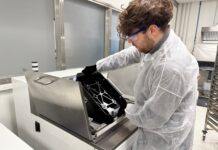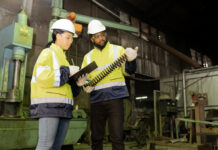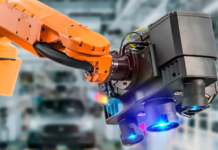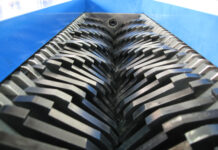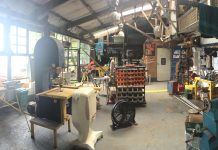Reshoring: A Collaborative Challenge
JM Performance products and the reshoring initiative® provide “q&a” analysis of intangibles on turning the tide on this evolving issue.
North America’s $137 billion metalforming industry is driven by the production of a myriad of precision metal products using stamping, fabricating, spinning, slide forming and roll 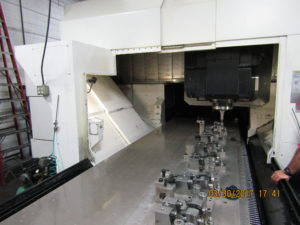 forming technologies, as well as vital value-added processes. In recent decades, approximately 3-to-4 million of all U.S. manufacturing jobs have been cumulatively lost to offshoring.
forming technologies, as well as vital value-added processes. In recent decades, approximately 3-to-4 million of all U.S. manufacturing jobs have been cumulatively lost to offshoring.
The tide seems to be turning modestly in recent years by companies returning U.S. production, or sourcing, from offshore. In comparison to 2000-2003, when the United States lost (net) about 220,000 manufacturing jobs per year to offshoring, 2016 achieved a net gain of 27,000.
Progressively bridging this gap presents huge collaborative opportunities and challenges to all associated manufacturers, associations, employees, communities, and the U.S. government itself. The following is a “Q&A” briefing analysis of key factors in the collective goal of gaining momentum in successfully returning the manufacturing of parts or products back to the U.S. from offshore.
Participating in this “return-manufacturing-home” Q&A are two representative entities with vested interest on the subject− JM Performance Products, Inc. (JMPP: Fairport Harbor, OH) President, John Stoneback, and the Reshoring Initiative® (RI: Kildeer, Illinois) President, Harry Moser.
JM Performance Products, Inc. is a leading manufacturing innovator of CNC mill spindle optimization products since 2009. Their Patented High Torque Retention Knobs overcome a critical “loose-tool” design flaw inherent in CNC v-flange tooling that was responsible for costly CNC milling and boring issues industry wide−in terms of production, time, and tooling.
An essential element of the patented design is a knob that is longer and reaches a little deeper into the holder’s threaded bore. As a result, all thread engagement occurs in a region of the toolholder where the diameter is large, and where there is correspondingly more material to resist deformation.
The Reshoring Initiative, founded in early 2010, takes action by helping manufacturers realize that local production, in some cases, reduces their total cost of ownership of purchased parts and tooling. The RI also trains suppliers how to effectively meet the needs of their local customers−giving the suppliers the tools to sell against lower priced offshore competitors. The RI is a nonprofit organization that offers a number of free tools to advance their mission.
What Has Driven/Drive Domestic Manufacturing Overseas
The machine capital cost is relatively the same in all countries, both Stoneback and Moser agree that the keydriving variable has always been cheap labor overseas−which drives a low part cost benefit.

“When they first began to offshore, say, to China, the Chinese wages were so low that the price differential was, say, 30 or 40 percent,” explains Moser. “But now that the Chinese wages have come up, that price gap might only be 10 or 15 percent. As a result, even China is outsourcing to Malaysia for cheaper labor.”
“U.S. productivity is 2-to-3 times that of the Chinese, so the key is to have the benefit of the advantages of reshoring be enough to overcome the remaining labor cost gap,” adds Stoneback. “Ultimately at first glance, overseas is a low part cost benefit. Overcoming the shrinking emerging market wage advantages via factoring in all the intangibles makes reshoring a different story.”
“Additionally, the current USD is 30% too high vs. other currencies,” says Moser. “Corporate tax rates are too high, there’s no Value-Added Tax (VAT), too many regulations, healthcare costs are too high, oil prices are low, and there’s a weak skilled workforce. We’ll need stronger innovation and some confidence that the current administration will overcome some of these negatives, so the price gap will shrink enough that companies will start to see that the “hidden costs” of offshoring close the deal.”
How To Encourage Domestic Manufacturing To Reshore?

“The simple fact is that there are always three key benefits in reshoring: cost, time, and insurance,” says Stoneback. “Maybe even a fourth factor−inventory and space logistics. Those factors are so small to consider if you’re manufacturing in the U.S., that you can do the math in your head as it’s a simple cost analysis.
“Basically there’s more control as the ability to guarantee delivery within five days or so, even by truck, anywhere in the U.S. is reasonable−therefore it’s easier to keep the supply going smoothly without any overseas delays or surprises! Even the weather is a factor in delivering from overseas. The fact is, in overseas production you can anticipate having delays, spreading out money over time, multi-line invoicing, and increased insurance−plus you may have to over-produce to anticipate needed demand.”
“In the simplest terms, you can anticipate approximately 4-to-5 times shipping cost variance in bringing products in from China vs. the U.S. That’s not even factoring in the importer’s mark-up on products from overseas which could be upwards of 15 cents on the USD.”
“There are advantages of building dies in the U.S. to manufacture components and we should be focused on bringing them back” believes Moser. “Factors such as duty, freight costs, tied-up cash flow, poor product quality, intellectual property risk, and delayed delivery are all reduced. There also would be the value-added benefits of ease of attending run-off, ability to send the die back quickly for correction, spare parts availability, and ease of partnering with the customer, amongst others.”
“When we send high volume production work overseas they don’t make one die here,” says Stoneback. “Dies are produced cheap for plastic parts overseas, and they just throw them away and send another in from overseas at pennies on the dollar vs. refurbishing existing dies. When dies are manufactured in the U.S., we make the molds to last and can customize to the application, provide rapid prototypes, obtain first article approval quickly, control cost of ownership, and have the ability for the customer to come back whenever they want and the mold is still there for the next order.”
Promoting A Domestic Manufacturing Renaissance
“Nationally and corporation-wise, we need a more highly skilled workforce, advanced basic education, and improved automation,” says Moser. “By promoting partnerships with Skilled Workforce and Economic Development Programs, embracing U.S. companies with reshoring-focused technologies like JMPP, and the use of the Reshoring Initiative’s Total 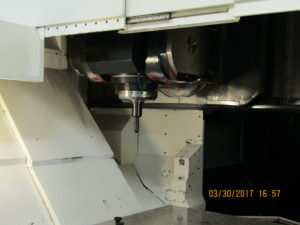 Cost of Ownership Estimator®, we can collectively make reshoring a more viable short and long-term platform for more orders, jobs, and profitability.”
Cost of Ownership Estimator®, we can collectively make reshoring a more viable short and long-term platform for more orders, jobs, and profitability.”
“In today’s offshoring climate,” adds Stoneback, }we’re left with more short order production runs. We need to train our workforce so they can handle the capacity of the jobs that are big in volume that can create long-term employment. Plants overseas use less and less people and more robotics−we need to train people so they are skilled craftsmen again.”
Moser believes reducing labor hours is most important.
“Since U.S. wage per hour for labor is higher than overseas options. For example, manufacturers that have technological advantages of reducing production time in areas such as milling machine, polishing, and refurbishing would be significant.”
“Education is a factor,” believes Stoneback, “approximately 1/3 less training is required for a CNC milling person with our High Torque Retention Knobs. Additionally, there is no variance with our product as you set up the job once and use them the same way identically−so there’s no additional set-up time. In fact, a single operator can run at least one additional milling machine (upwards to a max of four) once the work piece is set, you just press a button on the machine. Imagine the production savings in that equation in reducing cycle times, labor costs, and delivery time−all while improving quality and surface finish.”
Quantify The “Hidden Costs” Of Offshoring Vs. Reshoring
The Reshoring Initiative and JM Performance Products both offer a free analytical tool that can aid manufacturers with identifying key cost analysis factors in offshoring vs. reshoring production. JMPP’s Return On Investment (ROI) analysis shows exactly how much you save and overall value in production by converting to their High Torque Retention Knobs. RI’s TCO Estimator helps decide whether the resulting lower manufacturing cost reduces the price gap enough to be overcome by the higher offshore “hidden costs.”
“Most companies make sourcing decisions based solely on price,” says Moser, “oftentimes resulting in a 20-to-30 percent miscalculation of actual offshoring costs. The TCO Estimator is a free online tool that helps companies account for all relevant factors−overhead, balance sheet, risks, corporate strategy and other external and internal business considerations−to determine the true total cost of ownership. By leveraging this information, companies can better evaluate sourcing, identify alternatives, and even make a case when selling against offshore competitors. It’s a free tool on our website: www.reshorenow.org/tco-estimator.”
“The TCO Estimator has been used by hundreds of companies to quantify the “hidden costs” of offshoring or reshoring. It focuses on asking the companies what products are causing “pain” = large “hidden costs.” They use TCO to find the products where the hidden costs are greater than the price gap. Morey Corp used our Estimator to show that even though its price was higher than the Chinese competitor, its TCO was lower and saved a $60 million order.”
“Typical CNC milling centers are running machines 20-40% slower than they should be” explains Stoneback. “If you are able to significantly increase the speed of machines via eliminating the deficiencies of conventional retention knobs vs. JMPP High Torque Retention Knobs, conservative estimate savings of 10-15% can be achieved.”
“We offer customers a free analytical conversion consultation based on ROI in using our product, which can assist them in determining overall production savings in manufacturing. It starts with a simple equation−at a conservative minimum of 10% productivity increase using our High Torque Retention Knobs vs. convention knobs, how would it affect the health of your company?”
“Take the number of mills in your shop and multiply that times the number of hours per day you run. Now take that number and multiply it by the number of days per week that you’re running the mills. Multiply that number by your hourly billable rate. Now multiply that number by 52 weeks. The number you calculated is your unadjusted yearly revenue. Now, take that yearly revenue figure and multiply it by 10%−that’s the number that represents your annual lost revenue.”
“A simple example: 1 mill x 8 hours per day=8 hours; 8×5 days per week=40 hours; 40 hours x billable rate of $100=$4,000/per week; $4,000 x 52 = $208,000 annually. $208,000 x 0.10=$20,800 lost revenue per year.”
Advancing The Reshoring Renaissance
“Reshoring is showing incremental strength across the board in leading industries such as transportation, equipment, appliances, plastic and rubber products, fabricated metal products, electronics, and appare,” says Moser. “If reshoring continues to progress in the 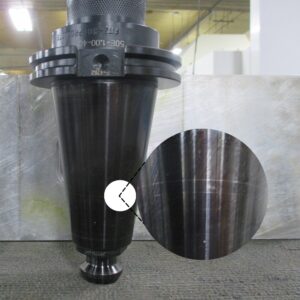 long term, it will help eliminate the $500 billion trade deficit, avoid the collapse of the USD, cut the budget deficit in half, strengthen recruitment of skilled workforce, stabilize the military industrial base, fix income inequality, and enhance innovation.”
long term, it will help eliminate the $500 billion trade deficit, avoid the collapse of the USD, cut the budget deficit in half, strengthen recruitment of skilled workforce, stabilize the military industrial base, fix income inequality, and enhance innovation.”
“For companies with unique technologies such as ours, it’s as simple as converting existing CNC systems to the new knobs to immediately reduce manufacturing costs,” says Stoneback, “and educating people how to do setups and working the parts. Ultimately, less training and less tooling−everything is a plus as a 10-30% overall productivity increase is a realistic and achievable goal.”
“With the High Torque Retention Knobs you start subtracting 20% on time, tooling costs, education, job set-up, and there’s no maintenance. Any product that requires a lot of people to make is going to be desired by all sides, and we need more of these high volume production jobs reshored. Our product proves that no matter what you are making, you will increase production. By doing it in the U.S., shipping and insurance factors are eliminated, there’s no need to bring in more inventory in advance−and you can do it at home quicker!”
About JM Performance Products, Inc.
Established in 1966, JM Performance Products, Inc. (JMPP) has firmly established itself as a leading manufacturer of CNC mill spindle optimization products. Across a myriad of markets, JMPP is dedicated to reshoring with over 500 styles of patented Retention Knobs for BT, DIN, ISO, and CAT toolholders from 30 taper to 60 taper−all manufactured and material sourced in the United States! All products are engineered to optimize milling machine performance including: improving finishes, eliminating run-out, reducing chatter and harmonics, decreasing set-up times, extending tool life, and increasing spindle performance.
For more details about JMPP contact: www.jmperformanceproducts.com
For more details on the Reshoring Initiative information contact: www.reshorenow.org


